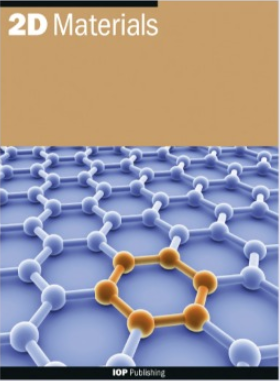Electrically tunable correlated domain wall network in twisted bilayer graphene
IF 4.5
3区 材料科学
Q2 MATERIALS SCIENCE, MULTIDISCIPLINARY
引用次数: 0
Abstract
We investigate the domain wall network in twisted bilayer graphene (TBG) under the influence of interlayer bias and screening effect from the layered structure. Starting from the continuum model, we analyze the low-energy domain wall modes within the moiré bilayer structure and obtain an analytic form representing charge density distributions of the two-dimensional structure. By computing the screened electron–electron interaction strengths both within and between the domain walls, we develop a bosonized model that describes the correlated domain wall network. We demonstrate that these interaction strengths can be modified through an applied interlayer bias, screening length and dielectric materials, and show how the model can be employed to investigate various properties of the domain wall network and its stability. We compute correlation functions both without and with phonons. Including electron–phonon coupling in the network, we establish phase diagrams from these correlation functions. These diagrams illustrate electrical tunability of the network between various phases, such as density wave states and superconductivity. Our findings reveal the domain wall network as a promising platform for the experimental manipulation of electron–electron interactions in low dimensions and the study of strongly correlated matter. We point out that our investigation not only enhances the understanding of domain wall modes in TBG but also has broader implications for the development of moiré devices.扭曲双层石墨烯中的电可调相关畴壁网络
我们研究了扭曲双层石墨烯(TBG)在层间偏压和层状结构屏蔽效应影响下的畴壁网络。我们从连续体模型出发,分析了摩尔双层结构中的低能畴壁模式,并得到了代表二维结构电荷密度分布的解析形式。通过计算畴壁内部和畴壁之间的屏蔽电子-电子相互作用强度,我们建立了一个描述相关畴壁网络的玻色子化模型。我们证明了这些相互作用强度可以通过施加层间偏压、屏蔽长度和介电材料来改变,并展示了如何利用该模型来研究畴壁网络的各种特性及其稳定性。我们计算了没有声子和有声子时的相关函数。包括网络中的电子-声子耦合,我们根据这些相关函数建立了相图。这些图解说明了网络在密度波状态和超导等不同相位之间的电可调性。我们的研究结果表明,畴壁网络是低维度电子-电子相互作用实验操作和强相关物质研究的理想平台。我们指出,我们的研究不仅增强了对 TBG 中畴壁模式的理解,而且对摩尔器件的发展具有更广泛的意义。
本文章由计算机程序翻译,如有差异,请以英文原文为准。
求助全文
约1分钟内获得全文
求助全文
来源期刊

2D Materials
MATERIALS SCIENCE, MULTIDISCIPLINARY-
CiteScore
10.70
自引率
5.50%
发文量
138
审稿时长
1.5 months
期刊介绍:
2D Materials is a multidisciplinary, electronic-only journal devoted to publishing fundamental and applied research of the highest quality and impact covering all aspects of graphene and related two-dimensional materials.
 求助内容:
求助内容: 应助结果提醒方式:
应助结果提醒方式:


